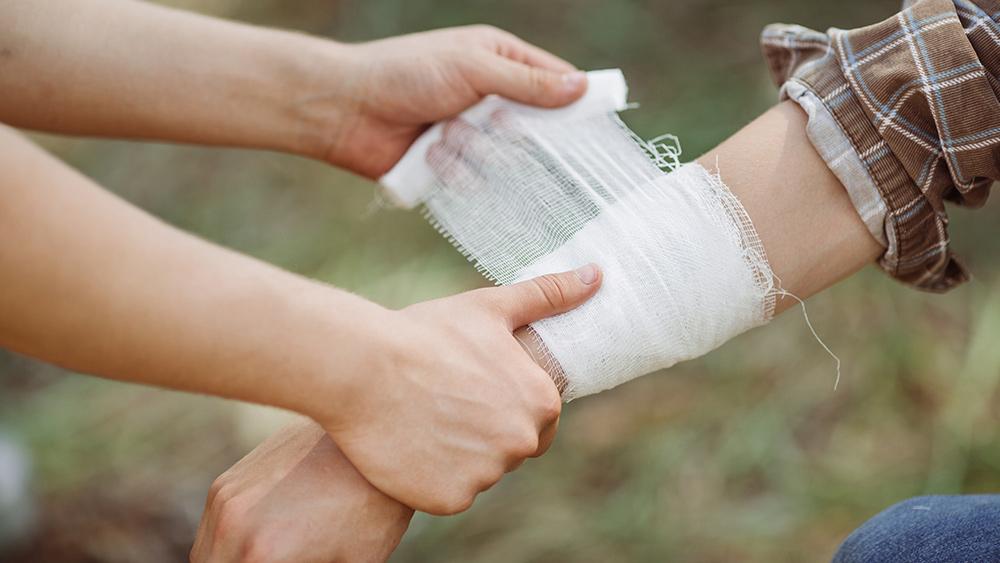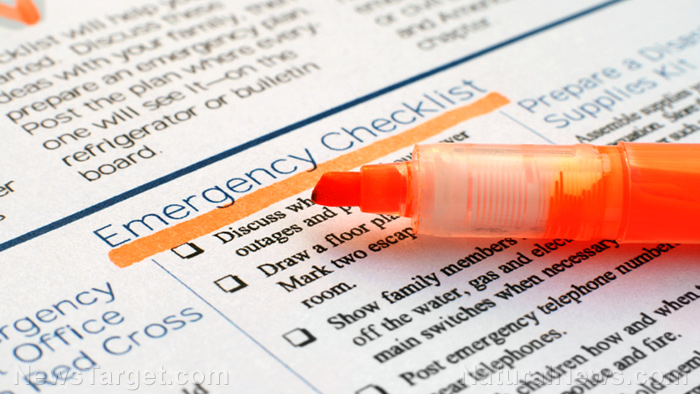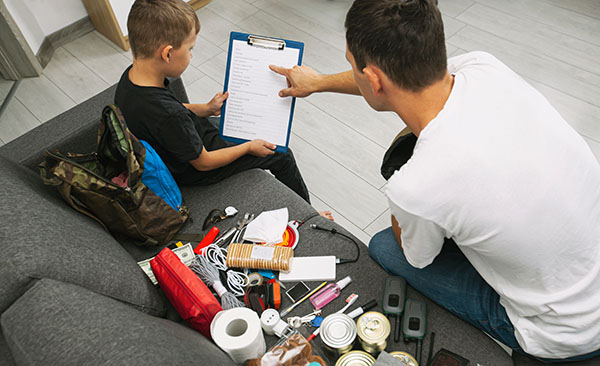
Having an SHTF first aid kit before disaster strikes helps ensure that you are prepared to treat different minor or major wounds.
Check the lists below for ideas on what items you need in your first aid kit. (h/t to PreparednessAdvice.com)
Prepping a first aid kit
Organize all the items in your first aid kit so that when disaster strikes, you don't waste precious seconds looking for a certain item. The kit itself should also be portable enough so you can easily and quickly bring it with you when treating an injured person.
You can use a large fishing tackle box to organize the supplies in your first aid kit. Place large items in the bottom of the box, then keep smaller items organized in the trays.
Alternatively, you can use an Emergency Response Trauma Bag as a first aid kit. These bags are easy to carry, but they don't have the same options to separate and view supplies like a fishing tackle box. (Related: Prepping must-haves: Medical supplies and first aid kits.)
Don't skimp on the bag or items for your first aid kit. When disaster strikes, you'll be glad you bought high-quality items for your kit and you're dealing with a life or death situation.
Supplies for major wounds
When SHTF, you might have to deal with major injuries like broken bones and deep cuts if you don't have access to emergency medical services.
Prepare for major medical issues and include these items in your first aid kit:
- Elastic bandages – Use elastic bandages for a sprain or torn ligament. You can also use on to secure a splint in place.
- Eye cup – Debris that can scratch the eye can be serious and chemical exposure can cause blindness. Use an eye cup to flush the eyes of the patient. If you have enough space in your kit, include a full eye flush kit.
- Hemostats – Use a hemostat to close a vein if the patient has a severed limb. This will help prevent is essential to prevent fatal amounts of blood loss. A hemostat can save a life.
- Medical scissors – Use a sharp pair of medical scissors to cut off jeans from a wounded patient or to remove bandages.
- Structural aluminum malleable (SAM) splint – A SAM splint kit can be cut with surgical scissors and is light and easy to carry. It's made of light aluminum and 1/4-inch foam and can be formed to fit almost any break.
- Sling or combat cravat – Use a sling to keep broken arms stationary.
- Thermometer – A severe infection or illness can cause a fever and knowing the temperature of the patient matters. If a fever gets over 102 F, apply emergency cooling measures.
- Tourniquet – A one-handed tourniquet can be easily applied and adjusted to the right tightness.
- Tweezers – You'll need tweezers to remove small contaminants from wounds.
Supplies for minor wounds
When SHTF, you will need your first aid kit mostly for flesh wounds.
To treat minor wounds, you will need the following supplies:
- Alcohol towelettes – For cleaning the wound and the area around it if you don't have access to soap and running water.
- Antibacterial ointment – Use this to kill bacteria that might cause an infection.
- Butterfly closures – Used to close wounds where the skin is open or separated. Butterfly closures help reduce bleeding and protect the wound.
- Cloth knuckle bandages – Use this to bandage small cuts and scrapes on the knuckle area.
- Clotting agent – A clotting agent will make the clotting process go faster and stop the bleeding.
- Large bandages – Gauze pads that are 4x6 inches and 2x3 inches in size are best for treating medium-size wounds.
- Medical tape – Use medical tape to hold gauze in place.
- Regular adhesive bandages – Used to protect the wound and scab from friction, bacteria, damage and dirt.
- Safety pins – To secure triangular bandages
- Syringe – Use a clean syringe and potable water to clean a wound with dirt and debris
- Triangular bandages – Can be used as large dressings or as slings to support a limb.
Post-SHTF hygiene
Hygiene is essential when treating wounds.
Your first aid kit should also include:
- Anti-bacterial hand cleaner – Never touch a patient's wound without cleaning your hands first because you might transmit different kinds of bacteria.
- Face mask – An N95 facemask will help protect an open wound from any germs you might accidentally breathe into it.
- Sterile rubber gloves – Pack sterile, single-use gloves.
You can also add other items you think you might need even if they're not included in the lists above.
Go to EmergencyMedicine.news to read more articles with prepping first aid tips.
Watch the video below to know more about other items you can include in an everyday carry (EDC) first aid kit.
This video is from the Geordie Prepper channel on Brighteon.com.
More related stories:
Prepping before SHTF: 16 Items for your survival first aid kit.
Prepper first aid: DIY antiseptics for wound care.
Survival first aid: Handling tetanus in a post-SHTF scenario.
Sources include:
Please contact us for more information.





















